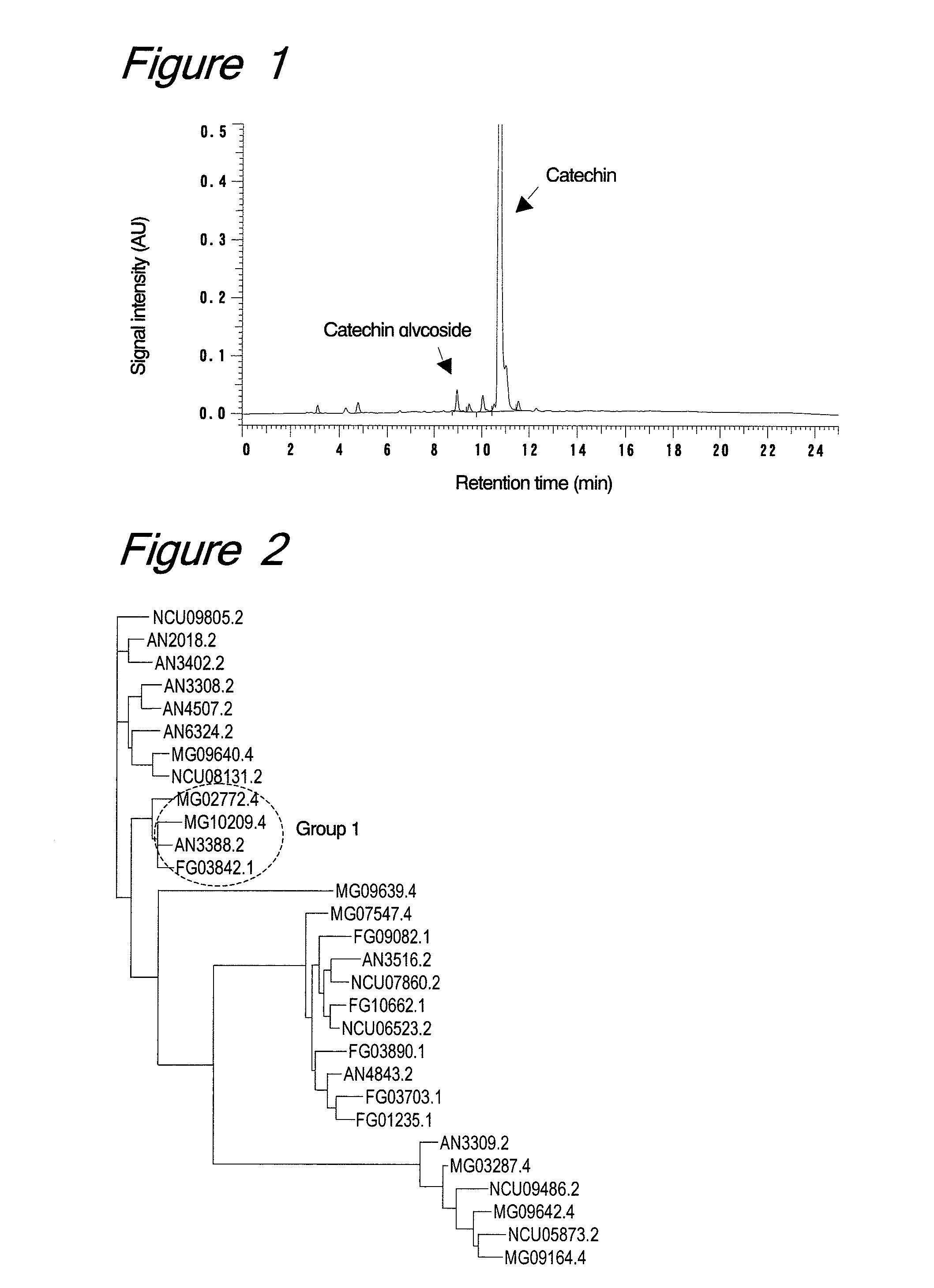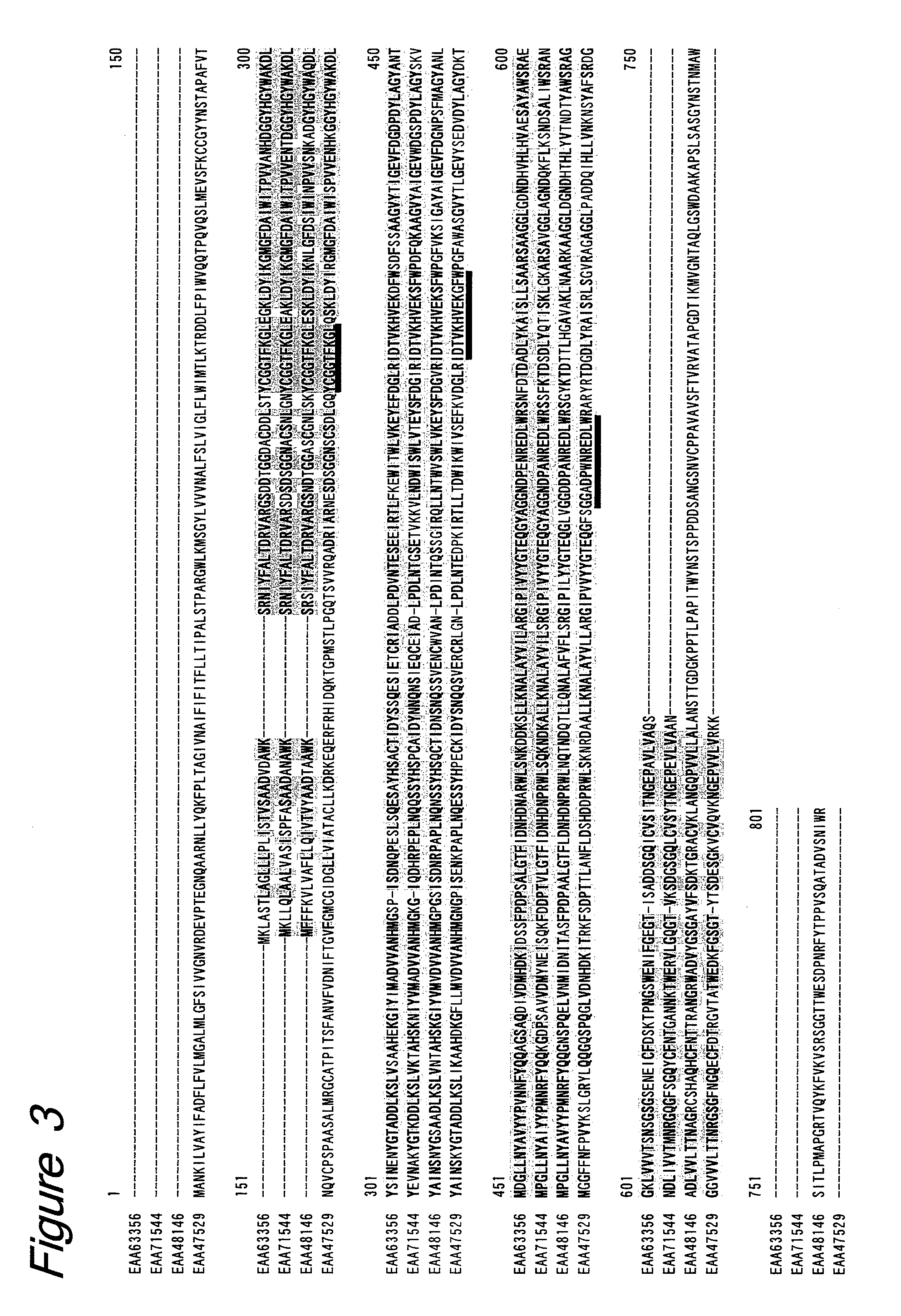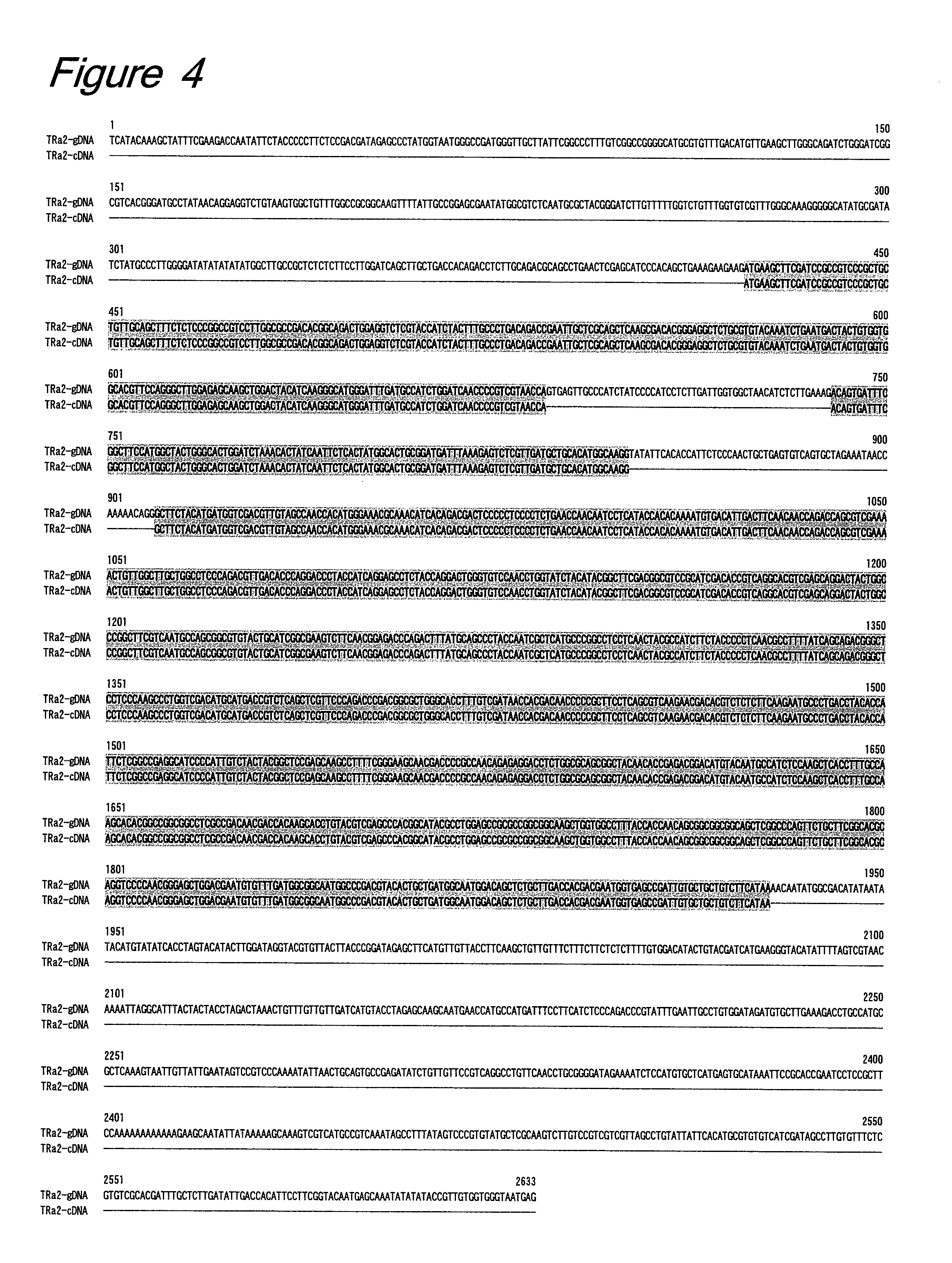Method for glycosylation of flavonoid compounds
a technology of glycosylation and flavonoid compounds, which is applied in the direction of extracellular fluid disorder, metabolic disorder, immune disorders, etc., can solve the problems of inability to show the detailed structure of the reaction product, and the body is less absorbable, so as to improve the water solubility of the compound, the effect of efficient glycosylation and efficient glycosylation
- Summary
- Abstract
- Description
- Claims
- Application Information
AI Technical Summary
Benefits of technology
Problems solved by technology
Method used
Image
Examples
example 1
Catechin Glycosylation Activity in Trichoderma Culture
[0105]Trichoderma viride strain IAM5141 was inoculated from a slant into a liquid medium (10 ml) containing 1% yeast extract (Difco), 1% polypeptone (Nihon Pharmaceutical Co., Ltd., Japan) and 2% dextrin (Nacalai Tesque, Inc., Japan), followed by shaking culture at 30° C. for 1 day to give a pre-cultured solution. Further, the entire volume of the pre-cultured solution was inoculated into 900 ml of the same liquid medium and cultured at 30° C. for 3 days, followed by filter filtration to prepare a culture supernatant solution. After addition of ammonium sulfate (387 g, 80% saturation) to the culture supernatant (690 ml), the mixture was stirred and centrifuged to collect a precipitate. The resulting precipitate was diluted with 10 ml of 0.1 M acetate buffer (pH 5.0) for use as a crude enzyme solution.
[0106]To the crude enzyme solution (100 μl), catechin (3 mg) and dextrin (10 mg) were added and stirred at 50° C. for 24 hours to c...
example 2
Properties of Various Enzymatic Agents Derived from the Genus Trichoderma
[0115](+)-Catechin (3 mg) was dissolved in 100 μl of 0.1 M acetate buffer (pH 5) and mixed with each enzymatic agent (10 mg or 10 μl) and soluble starch (10 mg, Nacalai Tesque, Inc., Japan) or dextrin (10 mg), followed by stirring at 50° C. for 1 day. After the reaction, the centrifuged supernatant was diluted 10-fold and analyzed by HPLC. Analysis conditions were set as shown in Example 1.
[0116]The enzymatic agents used are shown in the table below, along with their experimental results.
TABLE 1Gly-Productcosyl(% area)SupplierEnzymatic agentdonor7-Glc5-GlcYakultCellulase “Onozuka”none——Pharmaceuticalderived from Trichoderma virideSS2.868.79IndustryDex2.938.97YakultCellulase “Onozuka” RSnone——Pharmaceuticalderived from Trichoderma virideSS2.219.21IndustryDex1.707.95YakultCellulase “Onozuka” R-10none——Pharmaceuticalderived from Trichoderma virideSS—7.68IndustryDex—5.98YakultCellulase “Onozuka” FAnone——Pharmaceut...
example 3
Preparation of Flavonoid Glycosides (1)
a. Preparation of 5-O-α-D-glucopyranosyl-(+)-catechin and 7-O-α-D-glucopyranosyl-(+)-catechin
[0118](+)-Catechin (60 mg) was mixed with soluble starch (200 mg, Nacalai Tesque, Inc., Japan), Cellulase T “Amano” 4 (200 mg, Amano Enzyme Inc., Japan) and 0.1 M acetate buffer (2 ml, pH 5), followed by stirring at 50° C. for 3 days. After the reaction, the centrifuged supernatant was fractionated and purified under the following conditions: column: Develosil C30-UG-5 (20×250 mm, Nomura Chemical Co., Ltd., Japan), Eluent A: 0.1% TFA / distilled water, Eluent B: 90% acetonitrile / 0.08% TFA, elution conditions: 20% Eluent B, flow rate: 4 ml / min, detection wavelength: 280 nm. The generated main peak fraction was collected and lyophilized to prepare a standard.
[0119]7-O-α-D-glucopyranosyl-(+)-catechin: m / z 450.9, NMR: δ ppm (D2O); 2.48 (1H, dd), 2.80 (1H, dd), 3.42 (1H, t), 3.4-3.7 (4H, m), 3.80 (1H, t), 4.14 (1H, q), 4.69 (1H, d), 5.47 (1H, d), 6.23 (1H, d),...
PUM
| Property | Measurement | Unit |
|---|---|---|
| Solubility (mass) | aaaaa | aaaaa |
| Water solubility | aaaaa | aaaaa |
| Stability | aaaaa | aaaaa |
Abstract
Description
Claims
Application Information
 Login to View More
Login to View More - R&D
- Intellectual Property
- Life Sciences
- Materials
- Tech Scout
- Unparalleled Data Quality
- Higher Quality Content
- 60% Fewer Hallucinations
Browse by: Latest US Patents, China's latest patents, Technical Efficacy Thesaurus, Application Domain, Technology Topic, Popular Technical Reports.
© 2025 PatSnap. All rights reserved.Legal|Privacy policy|Modern Slavery Act Transparency Statement|Sitemap|About US| Contact US: help@patsnap.com



